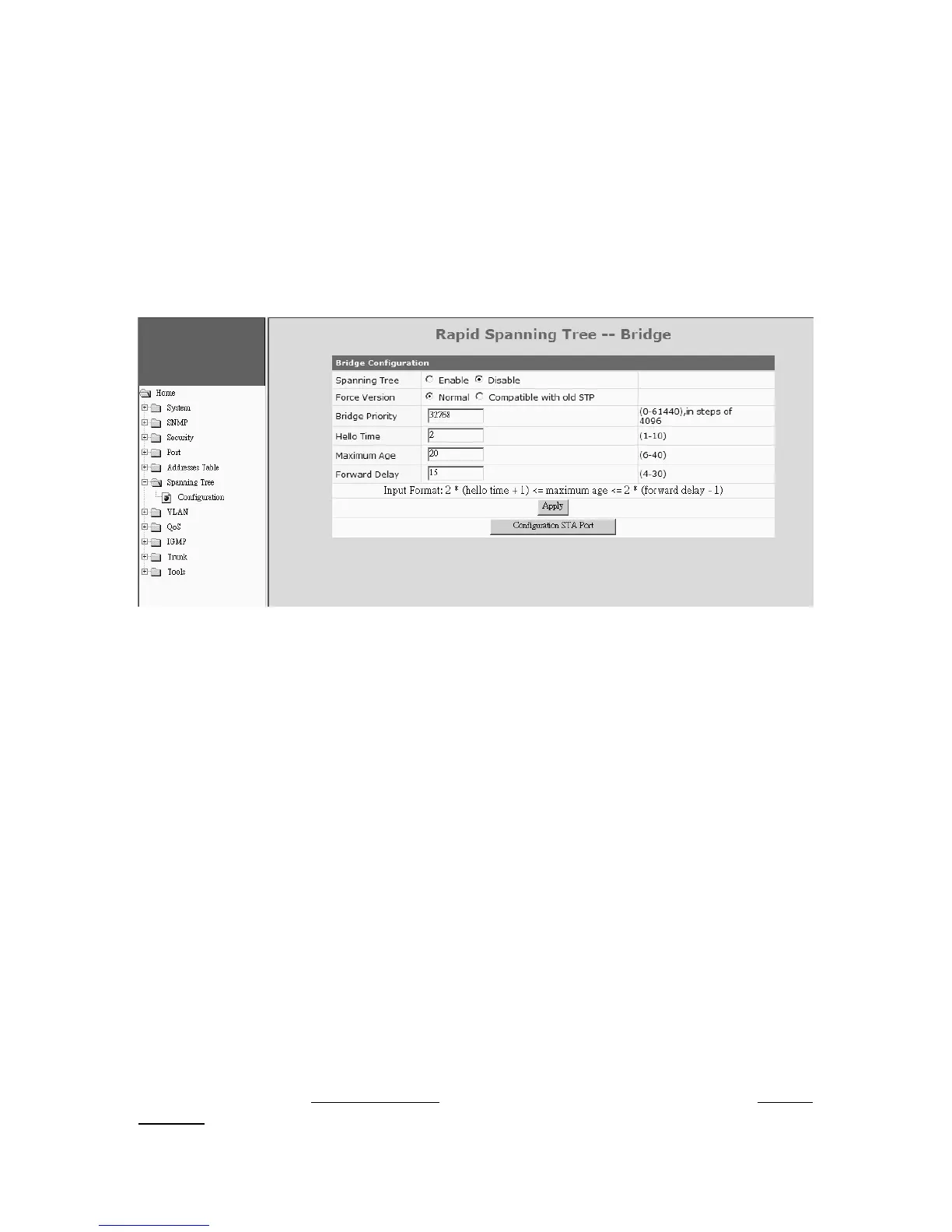102
6.4.6 Spanning Tree
Spanning Tree Protocol can prevent traffic looping in network. It can be
configured for switch unit (bridge) and port unit. If spanning tree function is
enabled, any link down to link up will have several seconds delay for the port
going to forwarding state.
[Setting of Bridge]
Here are the parameters for Spanning Tree operation on the switch.
Enable/Disable : enable/disable spanning tree operation
Force Version : It will operate as Rapid Spanning Tree in “Normal” state. And it
can be forced to operate at old Spanning Tree mode if “Compatible with old STP”
is selected.
Bridge Priority (0~61440) : Bridge priority is for selecting the root device, root
port, and designated port. The device with the highest priority (lowest value)
becomes the STA root device. If all devices have the same priority, the device
with the lowest MAC address will then become the root device.
Hello Time (1~10) : the period to send the spanning tree maintenance packet if
the switch is the root of the spanning tree. Default is 2 seconds.
Maximum Age (6~40) : the spanning tree aging time if no spanning tree
maintenance packet is received. It will cause the spanning tree to re-create.
Default is 20 seconds.
Forward Delay (4~30): the maximum waiting time before changing states (i.e.,
learning to forwarding). This delay is required because every device must receive
information about topology changes before it starts to forward frames. In addition,
each port needs time to listen for conflicting information that would make it return
to a blocking state; otherwise, temporary data loops might result.
The parameters have relation with each other. And here is the rule for it.
2*(Hello Time +1) is less or equal to
Maximum Age, and Maximum Age is less or
equal to 2*(Forward Delay -1).
